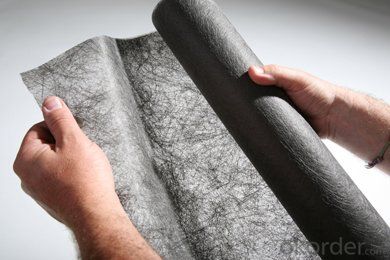- Understanding the Role of Geomembrane Liners in Waste Management
- Innovations in Geomembrane Liners for Water Management
- Geomembrane Liners: A Comprehensive Guide
- The Future of Geomembrane Liners in Civil Engineering
- Geomembrane Liners: Enhancing Landfill Stability
Manager:Alvin Wang
WhatsApp:+62 8983806051
Tel:+86 10-5797-1075
Email:steelwang@okorder.com
Address:3rd Floor, No.2 Building, No.1 Sanlihe Road
Geomembrane Liners: A Reliable Solution for Leachate Collection
Geomembranes, also known as synthetic liners, are a type of flexible barrier that is used to contain liquids and gases. They are made from various materials, including polymers, bitumen, and clay. These liners are commonly used in environmental engineering projects to prevent the escape of contaminants into the surrounding environment. One of the primary applications of geomembranes is in leachate collection systems, which are designed to collect and manage leachate generated from landfills, wastewater treatment plants, and other waste management facilities.

Leachate is a liquid that forms when water percolates through waste materials, picking up contaminants and dissolved substances along the way. If not properly managed, leachate can pose a significant threat to the environment and human health. This is where geomembrane liners come into play. They act as a reliable barrier, preventing the leachate from seeping into the ground and contaminating groundwater sources.
The Benefits of Using Geomembranes for Leachate Collection
Using geomembranes for leachate collection offers several benefits. Firstly, they are highly effective at preventing the escape of contaminants. The impermeable nature of these liners ensures that leachate is contained within the designated area, reducing the risk of environmental contamination.
Secondly, geomembranes are durable and long-lasting. They can withstand harsh environmental conditions, such as extreme temperatures, UV radiation, and chemical exposure, without degrading. This makes them a cost-effective solution, as they require minimal maintenance and have a long service life.
Thirdly, geomembranes are versatile and can be customized to fit the specific needs of a project. They can be tailored to the size, shape, and slope of the area in question, ensuring a snug fit and optimal performance.
The Role of Geomembranes in Environmental Protection
Geomembranes play a crucial role in environmental protection by preventing the spread of pollutants. By containing leachate, they help to safeguard groundwater resources, which are vital for sustaining ecosystems and providing clean drinking water. Moreover, they contribute to the overall sustainability of waste management facilities by reducing the environmental footprint of these operations.
The Installation Process of Geomembranes
The installation of geomembranes is a critical step in ensuring their effectiveness. Proper installation involves several key steps, including site preparation, material selection, and careful execution of the installation process. Site preparation involves clearing the area of debris, leveling the ground, and compacting the soil to create a stable base for the liner. Material selection is crucial, as different types of geomembranes have varying properties and are suited for different applications.
During the installation process, care must be taken to avoid punctures, tears, or other damage to the liner. This includes using appropriate equipment, following manufacturer guidelines, and ensuring that the liner is properly secured to the surrounding environment. Once installed, the geomembrane should be regularly inspected and maintained to ensure its ongoing effectiveness.
Challenges and Solutions in Geomembrane Liners
While geomembranes offer numerous advantages, they also come with some challenges. One common issue is the potential for leaks, which can occur due to defects in the material or improper installation. To address this, regular inspections and maintenance are essential, along with the use of high-quality materials and skilled installation teams.
Another challenge is the compatibility of the geomembrane with the surrounding environment. Some materials may react with certain chemicals or soil types, leading to degradation or reduced effectiveness. To mitigate this, it is important to carefully select the appropriate type of geomembrane for the specific conditions of the project.
The Future of Geomembranes in Waste Management
As waste management practices continue to evolve, the use of geomembranes is expected to grow. With increasing awareness of environmental issues and the need for sustainable solutions, geomembranes are poised to play an even more significant role in leachate collection and containment. Advancements in material science and engineering are also likely to lead to the development of more advanced and efficient geomembranes in the future.
In conclusion, geomembrane liners are a reliable and effective solution for leachate collection, offering numerous benefits in terms of environmental protection and waste management. By understanding the advantages, installation process, challenges, and future prospects of these liners, we can better appreciate their importance and make informed decisions when implementing leachate management systems.
- Previous:The Testing and Certification of Geomembrane Liners
- Next:The Role of Geomembrane Liners in the Oil and Gas Industry
-
2024-12-05Geomembrane Liners: A Comprehensive Guide






